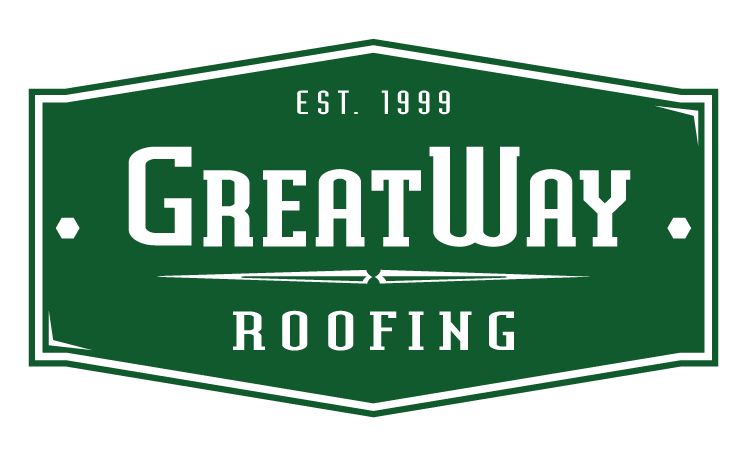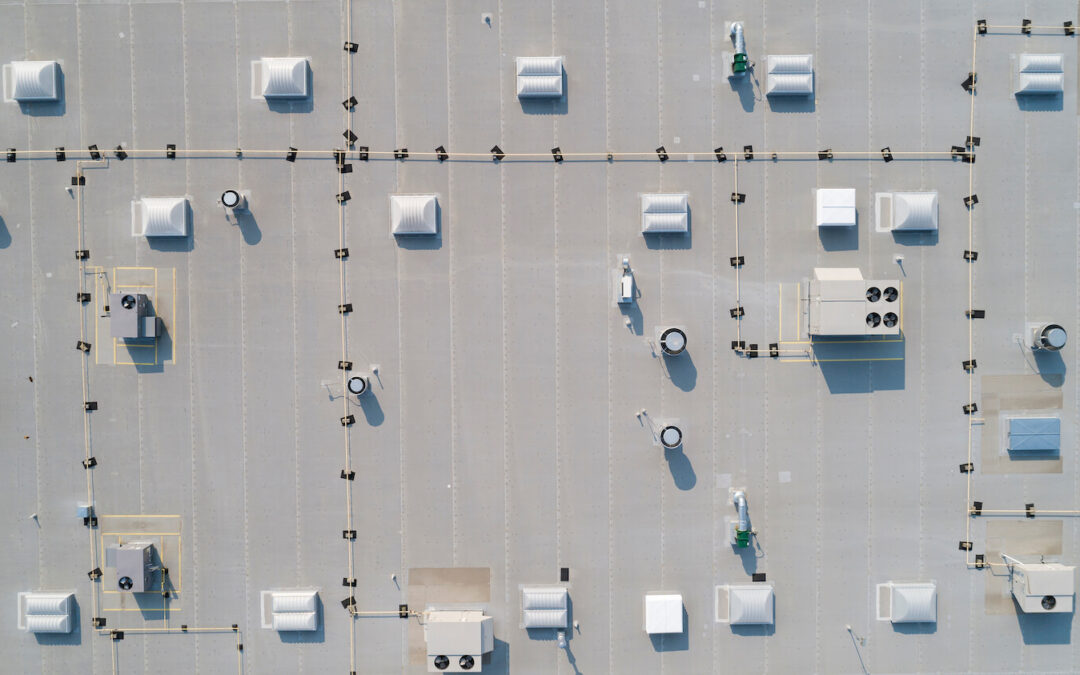A commercial building’s roof is critical to protecting the structure and its contents from the elements. Whether it’s rain, wind, hail, or harsh sunlight, a robust and well-maintained roof is essential for the longevity of the entire building. Investing in professional commercial roof repairs is paramount to ensure that your commercial roof stands the test of time.
The Importance of a Sound Commercial Roof
The roof of a commercial building serves as the first line of defense against weather conditions and external elements. It shields the interior from rain, hail, wind, and UV rays, preventing potential damage to the structure and its occupants. A compromised roof can lead to many problems, including leaks, mold growth, structural damage, and compromised insulation. As a result, addressing roof issues promptly through professional repairs is crucial for maintaining the integrity of the building.
Signs of Roof Damage
Early detection of roof damage can save building owners from expensive repairs and potential structural issues. Some common signs that indicate the need for commercial roof repairs include:
1. Leaks and Water Stains:
Water stains on ceilings or walls are clear indicators of roof leaks. Identifying and repairing these leaks promptly is essential to prevent further damage to the building’s interior.
2. Damaged Roof Membrane:
The roof membrane is a critical component that protects the building from water infiltration. Any visible damage, such as cracks or tears, should be addressed immediately to maintain the roof’s effectiveness.
3. Blisters and Bubbles:
Blisters and bubbles on the roof’s surface can compromise its integrity. These issues often arise due to trapped moisture, and addressing them promptly is essential to prevent more extensive damage.
4. Sagging Roof Deck:
A sagging or uneven roof deck may indicate structural issues. Professional inspection and repairs are necessary to address the root cause of the problem and ensure the roof’s stability.
5. Clogged Drains and Gutters:
Accumulated debris in drains and gutters can lead to water pooling on the roof. This standing water can cause significant damage over time, so regular cleaning and maintenance are crucial.
6. Visible Wear and Tear:
Over time, roofs can experience general wear and tear, including voids and cracks in the membrane, deteriorating sealants at the flashings, or damaged vents. Identifying and repairing these issues promptly can prevent more extensive damage.
The Role of Professional Commercial Roof Repairs
While some building owners may attempt to address minor roof issues on their own, the expertise of professional roof repair services cannot be overstated. Here are some key reasons why hiring professionals is essential for maintaining the longevity of a commercial roof:
1. Expertise and Experience:
Professional roofers possess the knowledge and experience needed to assess the extent of damage accurately. They can identify underlying issues that may not be apparent to an untrained eye, ensuring comprehensive repairs.
2. Quality Materials and Workmanship:
Commercial roof repair professionals have access to high-quality materials and equipment. Utilizing the correct materials and employing skilled workmanship is crucial for effective and long-lasting repairs.
3. Safety Compliance:
Roof repairs often involve working at heights, presenting inherent safety risks. Professional roofers are trained in safety protocols and adhere to industry standards, minimizing the risk of accidents or injuries during repairs.
4. Timely and Efficient Repairs:
Time is of the essence when it comes to roof repairs. Professionals can efficiently address issues, preventing them from escalating into more extensive and costly problems.
5. Comprehensive Solutions:
Professional roofers not only fix visible issues but also address underlying problems that may contribute to roof damage. This comprehensive approach ensures that the entire roofing system is in optimal condition.
Steps Involved in Professional Commercial Roof Repairs
When hiring professionals for commercial roof repairs, the process typically involves several key steps to ensure a thorough and effective solution:
1. Roof Inspection:
The first step is a comprehensive roof inspection. Professionals assess the roof’s overall condition, identifying any visible issues and potential underlying problems.
2. Problem Identification:
Based on the inspection, the roofing experts identify specific problems that need attention. This may include leaks, membrane damage, punctures, or issues with flashing and seals.
3. Repair Planning:
Once the issues are identified, a detailed repair plan is developed. This plan outlines the necessary repairs, the materials required, and the estimated timeline for completion.
4. Material Selection:
Professionals choose high-quality materials that are suitable for the specific roofing system. This ensures durability and longevity, providing lasting protection against the elements.
5. Repair Execution:
With the plan in place, the repair process begins. Skilled roofers execute the repairs with precision, addressing each identified issue methodically.
6. Quality Checks:
After completing the repairs, a series of quality checks are performed. This ensures that the work meets industry standards and that the roof is restored to optimal condition.
7. Preventive Measures:
In addition to addressing existing issues, professionals may recommend and implement preventive measures to avoid future damage. This could include improved drainage systems, additional sealant applications, or reinforcing vulnerable areas.
8. Client Communication:
Throughout the process, communication with the building owner is crucial. Professionals provide updates on the repair progress, discuss any unexpected findings, and ensure that the client is informed and satisfied with the work.
9. Documentation:
A reputable roofing company provides documentation of the repairs performed. This documentation records the work performed and may be valuable for warranty purposes or future inspections.
Roof Maintenance as a Preventive Measure
In addition to addressing repairs when issues arise, proactive roof maintenance is key to preventing damage and extending the lifespan of a commercial roof. Regular inspections and maintenance activities can identify potential problems before they escalate, saving building owners from costly repairs and disruptions to business operations.
1. Scheduled Inspections:
Establishing a routine schedule for roof inspections allows professionals to detect issues early. Regular inspections may also be required for compliance with warranties or insurance policies.
2. Cleaning and Debris Removal:
Keeping the roof clean from debris, leaves, and other materials is essential. Clogged drains and gutters can lead to water pooling, causing damage over time.
3. Sealant Application:
Periodic application of sealants can enhance the waterproofing capabilities of the roof. This is especially important in areas prone to heavy rainfall.
4. HVAC System Maintenance:
Roof-mounted HVAC systems should be regularly inspected and maintained to prevent leaks and roof membrane damage.
5. Trimming Overhanging Branches:
Overhanging branches can threaten the roof, especially during storms or high winds. Trimming branches away from the roof reduces the risk of damage.
6. Professional Consultation:
Building owners should consult with roofing professionals to develop a customized maintenance plan based on the specific characteristics of their commercial roofs.
The Cost of Neglecting Roof Repairs
Neglecting commercial roof repairs can have severe consequences, both in terms of cost and business continuity. Here are some of the potential costs associated with ignoring roof maintenance and repairs:
1. Structural Damage:
A compromised roof can lead to structural damage to the building, requiring extensive and expensive repairs.
2. Interior Damage:
Leaks and water infiltration can damage the interior of the building, including walls, ceilings, and valuable assets.
3. Mold Growth:
Moisture resulting from roof leaks can create an environment conducive to mold growth. Mold remediation is costly and can pose health risks to occupants.
4. Energy Inefficiency:
A damaged roof can compromise the building’s insulation, leading to increased energy consumption and higher utility bills.
5. Business Disruption:
Roof issues that result in leaks or structural problems can disrupt business operations, leading to downtime and financial losses.
6. Reduced Property Value:
A neglected roof can significantly impact the overall value of a commercial property. Potential buyers or tenants may be deterred by the prospect of dealing with extensive roof repairs.
Conclusion
Ensuring the longevity of a commercial roof requires a proactive approach to maintenance and prompt attention to repairs. Investing in professional commercial roof repairs is essential to protect the building, its occupants, and valuable assets from the adverse effects of weather and external elements. By addressing issues promptly, building owners not only mitigate potential costs but also contribute to their commercial properties’ overall sustainability and resilience. Regular inspections, timely repairs, and proactive maintenance are key components of a comprehensive strategy to safeguard one of the most critical components of any commercial building—the roof.

